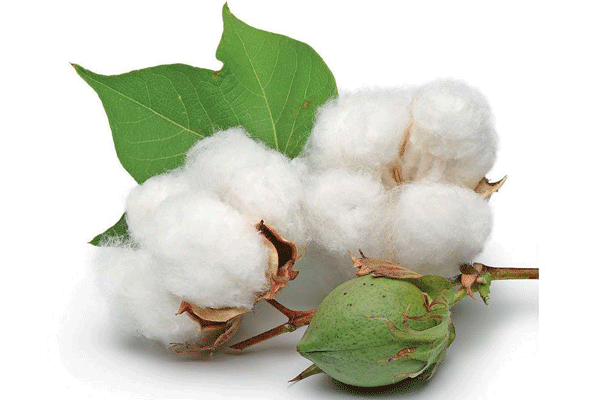State to establish 1,000 Bt cotton exhibition farms

KNA and Wahinya Henry
The State plans to establish 1,000 cotton demonstration farms in 23 cotton-growing counties ahead of the commercialisation of Bt cotton.
Speaking during the launch of a demonstration plot at Alupe University in Busia county last week, Agriculture Cabinet Secretary (CS), Peter Munya said the aim is to train farmers prior to commercial farming of the new Bt cotton variety.
This follows a Cabinet approval for commercial farming of Bt cotton, granted on December 19, 2019 in a plan to revitalise Kenya’s cotton, textile and apparel sector.
“Each demonstration farm will train at least 40 farmers to create a pool of 40,000 cotton farmers that will form part of catchment of BT cotton in readiness for commercial BT cotton farming in the country,” Munya said, adding that 60 demonstration farms will be established in Busia.
The CS attributed the collapse of cotton, textiles and apparel industries in 1980s to inappropriate macro-economic policies, including importing second-hand clothes.
A vibrant textile and apparels industry that had matured into a major export earner collapsed as factories such as Kicomi, Mountex and Thika Textile Mills crumbled.
Agriculture boost
Consequently, all upstream cotton industry support infrastructures such as ginneries also collapsed. Investments worth millions of shillings that had been painstakingly put into this industry were destroyed, along with many jobs lost and livelihoods. 
“Towns supported by these vibrant textiles industries became ghost-towns. At its peak, KICOMI employed over 3,000 people directly in those days,” said the CS.
Munya said the State is now targeting 200,000 acres under BT cotton cultivation by 2022 to create more than 2,500 jobs for along the value chain.
“Farmers should take advantage of Bt Cotton, which matures faster than other varieties.
It’s resistant to pests such as bollworms,” he said, adding that each demo farm will train 100 farmers.
The government plans to revive smallholder farmers cotton development organisations and build capacity in governance and leadership in cotton farmers’ cooperatives.
“We will modernise cotton ginneries, establish new ones to serve cotton cluster growing counties and enhance value addition and market acquisition to guarantee the project succeeds,” he said.
Munya said farmers would be provided with inputs. He called upon county governments of respective cotton growing areas to support the project by providing complementary support services, especially extension services.
Devolution CS Eugene Wamalwa, Busia Governor Sospeter Ojaamong and his deputy Moses Mulomi and Busia Woman Representative Florence Mutua also planted the Bt cotton seeds.
Ojaamong promised to work closely with the national government to ensure the project succeeds. He appealed to the State to give the county Sh1 billion to revive the cotton industry.
“We are going to support it fully by supporting farmers and their cooperative movements,” he said.
The PS State Department for Cooperatives, Ali Noor, underscored the need to revitalise cooperatives for the success of the project. Plans are underway to revive 25 cotton ginneries countrywide.
Supporters of the project include development partners, the State Department of Crop Development and county governments. “We have already started reviving Muluand Ginnery in Samia and we are working closely with local leaders,” he said.
Kenya becomes the seventh country in Africa to adopt the BT cotton variety after South Africa, Sudan, Ethiopia, Malawi, Nigeria and Eswatini.
The Cabinet approved commercial farming of Bt cotton in December after successful research and trials and has put necessary legislation for the success of revival of cotton growing.
Bt cotton is currently planted in 15 countries globally covering an area of 24 million hectares.
The top three leading Bt cotton producers are India (11.6 million hectares), US (5.06 million hectares) and China (2.93 million hectares).
Global experience with Bt cotton shows that the improved insect resistant varieties greatly boost cotton production by mitigating against the pests.
This drastically cuts use of harmful insecticides, leading to cleaner environments and improved farmer’s health. Additionally, farmers realise increased yields per unit area due to reduced production costs.
Local manufacturing
In the Government’s Big Four Agenda, the manufacturing pillar has identified backward and forward linkages with the agricultural sector through agro-processing and value addition as a critical success factor.
Adoption of Bt cotton has been identified as a great opportunity in reviving the cotton, textile and apparel sector.
This aligns with the ambitious plan to boost the GDP contribution of the manufacturing sector from the current 9.5 per cent to 15 per cent by the year 2022.
Commercial cultivation of Bt cotton will ensure ginneries and cotton processing industries have a constant supply of raw materials.
Thousands of job opportunities will be available in cultivation, processing or trading in locally manufactured garments and clothes.
Kenya’s textile and apparel products have preferential market access to the United States under the African Growth and Opportunity Act (AGOA) framework.
Kenya has market access agreements with the European Union while the East African region and the Common Market for Eastern and Southern Africa (Comesa) provide significant export opportunities for textile and apparels.





